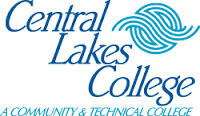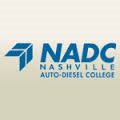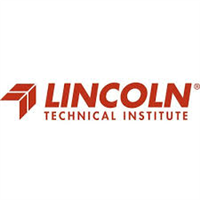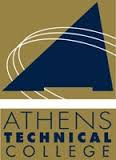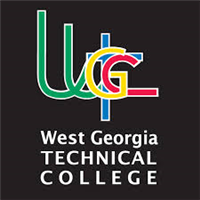What do they do?
Help electricians by performing duties requiring less skill. Duties include using, supplying, or holding materials or tools, and cleaning work area and equipment.
Also known as:
Apprentice, E and I Apprentice (Electrical and Instrumentation Apprentice), E and I Apprentice (Electrician and Instrumentation Apprentice), Electrical Apprentice, Electrical Helper, Electrician Apprentice, Electrician Helper, Electrician's Helper, Inside Wireman Apprentice, Wireman Apprentice
-
1.4%
Change
Ranks #34 in job growth rate170Job Openings
Ranks #20 in net job growth
Looking for colleges that offer a specific major? Use the College Match Tool to find your best-matched schools and discover your estimated Net Price!
- High school diploma equivalent (45%)
- Less than high school diploma (29%)
- Some college, no degree (13%)
- Bachelor's degree (6%)
- Associate's degree (5%)
- Master's degree (2%)
- Doctorate or Professional Degree (1%)
Most Popular Majors that prepare Helpers--Electricians
-
#1
-
Degrees Granted
48
-
Female Students
5
-
Male Students
43
-
Median Starting Salary
$55,200
-
-
#2
-
Degrees Granted
46
-
Female Students
2
-
Male Students
44
-
Median Starting Salary
$47,900
-
-
#3
-
Degrees Granted
2
-
Female Students
0
-
Male Students
2
-
Median Starting Salary
$55,200
-
People in this career often know a lot about:
- Building and Construction - Knowledge of materials, methods, and the tools involved in the construction or repair of houses, buildings, or other structures such as highways and roads.
- Mechanical - Knowledge of machines and tools, including their designs, uses, repair, and maintenance.
- Public Safety and Security - Knowledge of relevant equipment, policies, procedures, and strategies to promote effective local, state, or national security operations for the protection of people, data, property, and institutions.
- Design - Knowledge of design techniques, tools, and principles involved in production of precision technical plans, blueprints, drawings, and models.
- Customer and Personal Service - Knowledge of principles and processes for providing customer and personal services. This includes customer needs assessment, meeting quality standards for services, and evaluation of customer satisfaction.
- Administration and Management - Knowledge of business and management principles involved in strategic planning, resource allocation, human resources modeling, leadership technique, production methods, and coordination of people and resources.
- Education and Training - Knowledge of principles and methods for curriculum and training design, teaching and instruction for individuals and groups, and the measurement of training effects.
- English Language - Knowledge of the structure and content of the English language including the meaning and spelling of words, rules of composition, and grammar.
- Mathematics - Knowledge of arithmetic, algebra, geometry, calculus, statistics, and their applications.
- Engineering and Technology - Knowledge of the practical application of engineering science and technology. This includes applying principles, techniques, procedures, and equipment to the design and production of various goods and services.
People in this career often have talent in:
- Manual Dexterity - The ability to quickly move your hand, your hand together with your arm, or your two hands to grasp, manipulate, or assemble objects.
- Near Vision - The ability to see details at close range (within a few feet of the observer).
- Arm-Hand Steadiness - The ability to keep your hand and arm steady while moving your arm or while holding your arm and hand in one position.
- Finger Dexterity - The ability to make precisely coordinated movements of the fingers of one or both hands to grasp, manipulate, or assemble very small objects.
- Extent Flexibility - The ability to bend, stretch, twist, or reach with your body, arms, and/or legs.
People in this career often do these activities:
- Install electrical components, equipment, or systems.
- Test electrical equipment or systems to ensure proper functioning.
- Measure materials or objects for installation or assembly.
- Cut metal components for installation.
- Inspect electrical or electronic systems for defects.
- Repair electrical equipment.
- Maintain construction tools or equipment.
- Drill holes in construction materials.
- Thread wire or cable through ducts or conduits.
- Clean work sites.
- Fabricate parts or components.
- Move construction or extraction materials to locations where they are needed.
- Dig holes or trenches.
- Remove debris or vegetation from work sites.
- Position construction or extraction equipment.
- Order construction or extraction materials or equipment.
- Assemble temporary equipment or structures.
- Apply paint to surfaces.
- Break up rock, asphalt, or concrete.
- Operate heavy-duty construction or installation equipment.
- Operate excavation equipment.
- Weld metal components.
This page includes data from:

 Occupation statistics: USDOL U.S. Bureau of Labor Statistics Occupational Employment Statistics
Occupation statistics: USDOL U.S. Bureau of Labor Statistics Occupational Employment Statistics
 Videos: CareerOneStop, USDOL/ETA and the Minnesota Department of Employment & Economic Development
Videos: CareerOneStop, USDOL/ETA and the Minnesota Department of Employment & Economic Development

